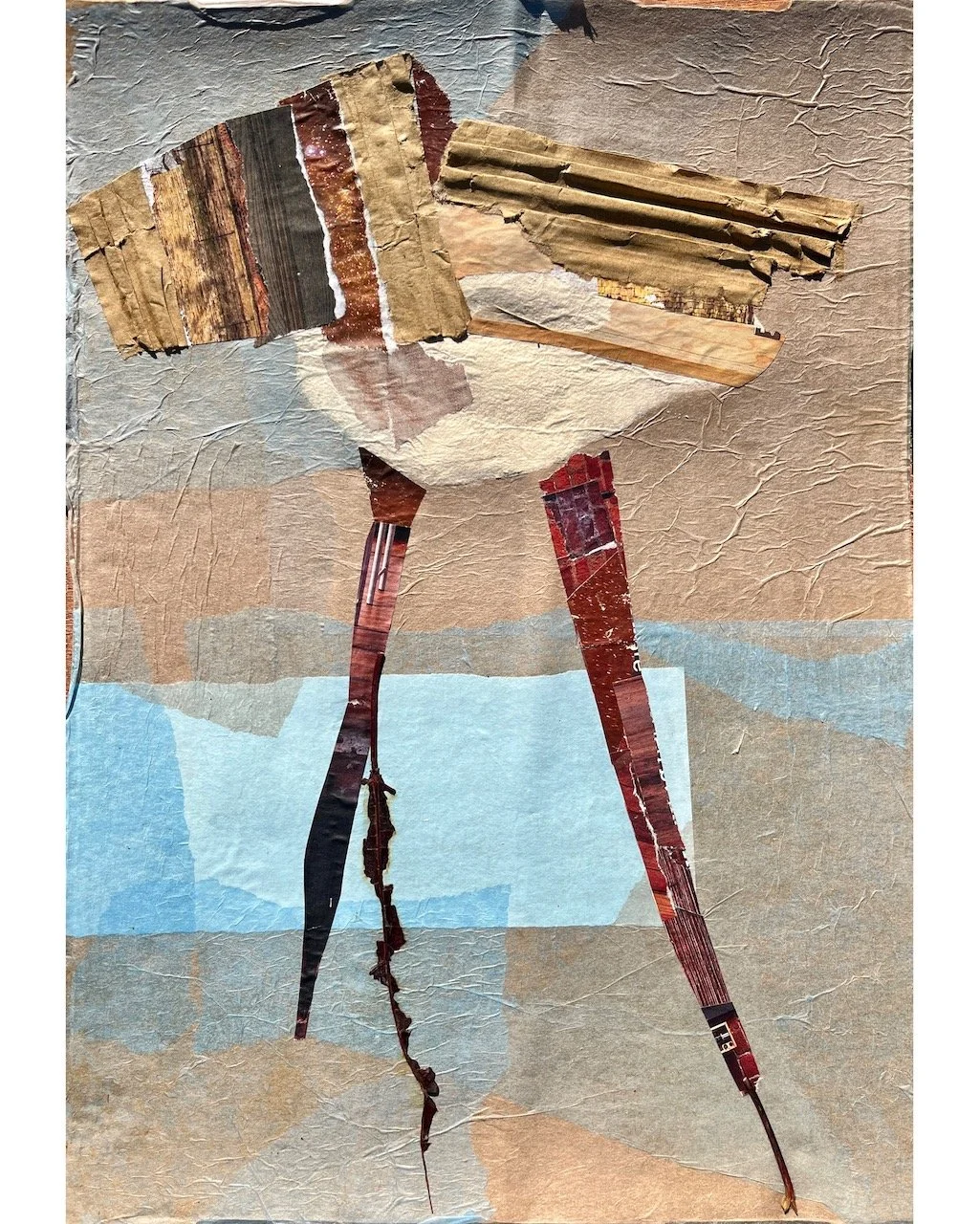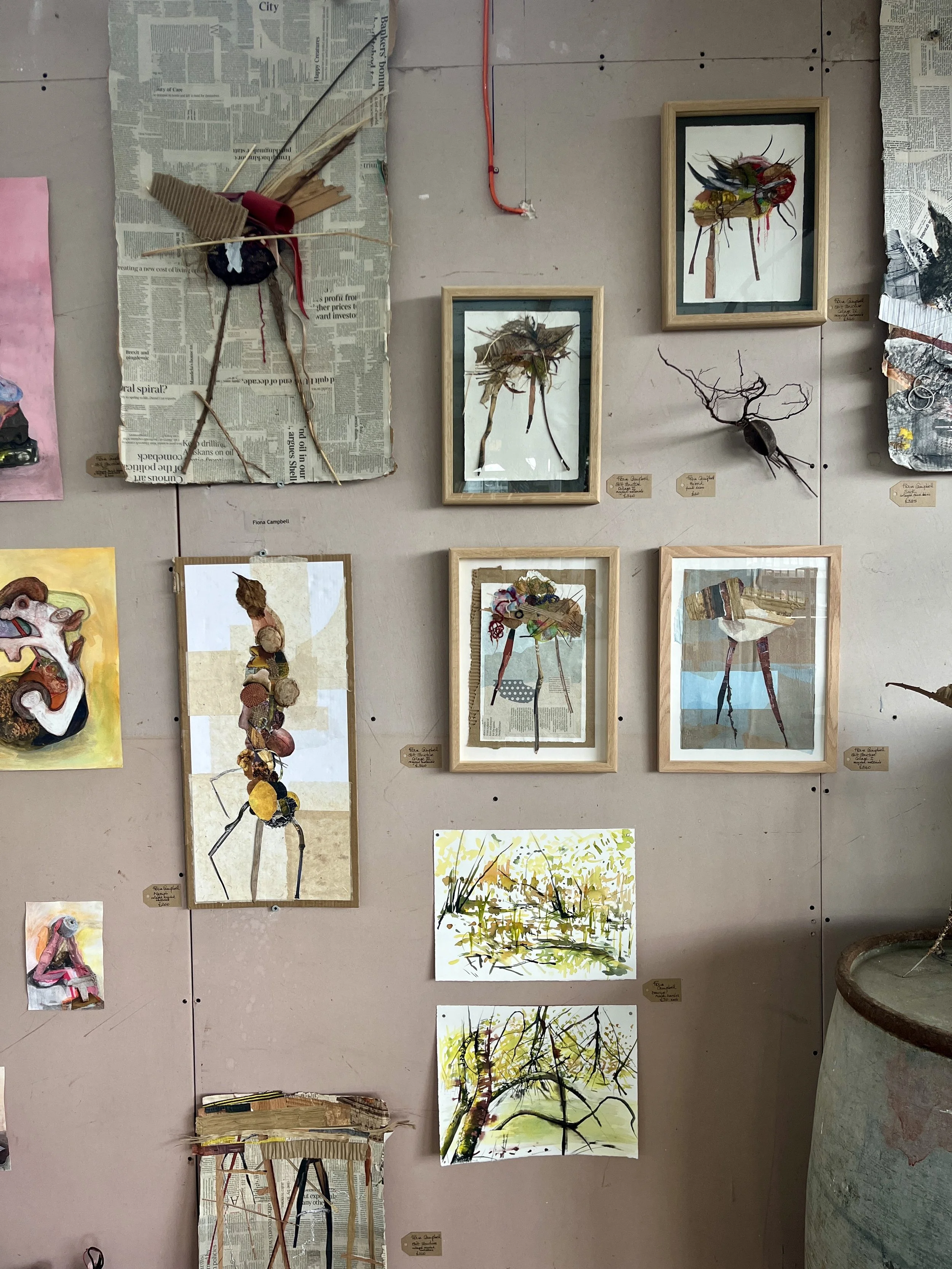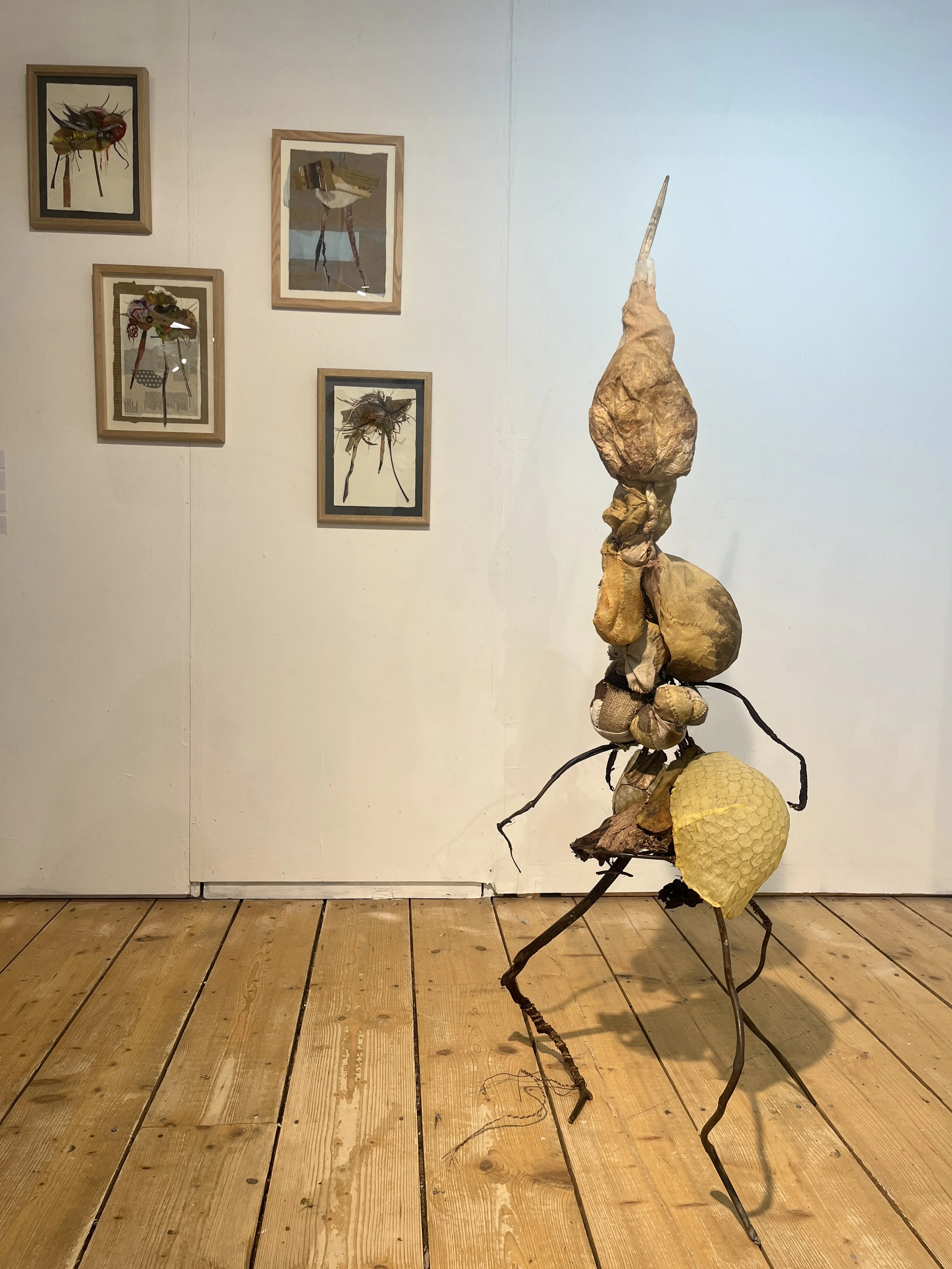Collage: Stilt Structure [collage I] (framed)
Collage: Stilt Structure [collage I] (framed)
Recycled and found materials on cardboard
32 (w) x 42cm (h) (incl frame)
2023
Framed (light wood)
Unique
One of a series of collages leading to my Stilt Structures, thinking about adaptability, resilience, and treading the earth lightly.
Stilt dwellings, built/raised high on make-do scaffolding to avoid floods and other threats, exist on the edges of safety in slums around the world; fragile structures in unstable environments that might collapse. The Landes stilt-walkers of 19th century France adapted to their boggy environment by getting about agilely on stilts. The ancient timber Sweet Track found in the Avalon Marshes, Somerset dates back 3800BC. The walkway, constructed on diagonal sticks, was a way for humans to traverse boggy marshland, once submerged under sea. Somali nomads carry their homes - elaborate bundles - on overladen camels (symbols of adaptability, endurance, trade routes). Growing up in Kenya, I have vivid memories of elderly African women walking home from miles bent over with heavy loads piled high on their backs.
For more about this series of work please visit Stilt Structures


